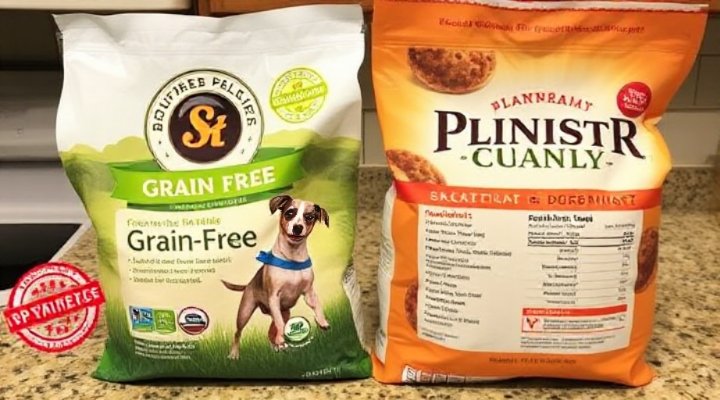Grain-free dog food has been gaining popularity among pet owners, and for good reason. Many dogs experience improved health and vitality when switched to a grain-free diet. But what exactly are the grain free dog food benefits that make it so appealing? Let’s dive into the details.

What is Grain-Free Dog Food?
Grain-free dog food, as the name suggests, is formulated without common grains like wheat, corn, and soy. Instead, it uses alternative carbohydrate sources such as sweet potatoes, peas, and lentils. This type of diet is particularly beneficial for dogs with grain sensitivities or allergies.
According to the American Veterinary Medical Association, food allergies in dogs are often caused by proteins in grains. By eliminating these ingredients, grain-free dog food can help alleviate allergic reactions.

Key Benefits of Grain-Free Dog Food
1. Improved Digestion
Many dogs struggle to digest grains properly, which can lead to gastrointestinal issues. Grain-free formulas are typically easier on your dog’s digestive system, resulting in better nutrient absorption and fewer stomach upsets.
2. Reduced Allergies
As mentioned earlier, grains are common allergens for dogs. Switching to grain-free food can significantly reduce symptoms like itchy skin, ear infections, and excessive licking. If you’re dealing with a dog with allergies, you might find our article on freeze-dried dog food benefits helpful as well.

3. Healthier Skin and Coat
The high-quality proteins and fats in grain-free dog food often lead to shinier coats and healthier skin. This is because these diets typically include more omega-3 and omega-6 fatty acids, which are essential for skin health.
4. Better Weight Management
Grain-free dog food tends to be lower in carbohydrates and higher in protein, which can help maintain a healthy weight. This is particularly beneficial for less active dogs or those prone to weight gain.

Is Grain-Free Right for Every Dog?
While grain-free dog food offers many benefits, it’s not necessarily the best choice for every dog. Some dogs do well on grain-inclusive diets, especially if they don’t have any sensitivities. It’s always best to consult with your veterinarian before making significant changes to your dog’s diet.
If you’re considering homemade options, check out our guide on homemade dog food recipes for healthy pets.

Transitioning to Grain-Free Food
When switching your dog to grain-free food, it’s important to do so gradually over 7-10 days. Start by mixing a small amount of the new food with their current food, gradually increasing the proportion. This helps prevent digestive upset.
For more information on choosing the right food for your dog, visit the FDA’s pet food page.
Final Thoughts
The grain free dog food benefits are clear: improved digestion, reduced allergies, better skin and coat health, and easier weight management. While it might not be necessary for every dog, it’s certainly worth considering if your pet shows signs of grain sensitivity.
Remember, every dog is unique, so what works for one might not work for another. Pay attention to your dog’s response to any dietary changes and consult with your vet if you have concerns.
Related keywords: grain free dog food, healthy dog food options, best dog food for allergies, dog nutrition guide, natural dog food benefits
